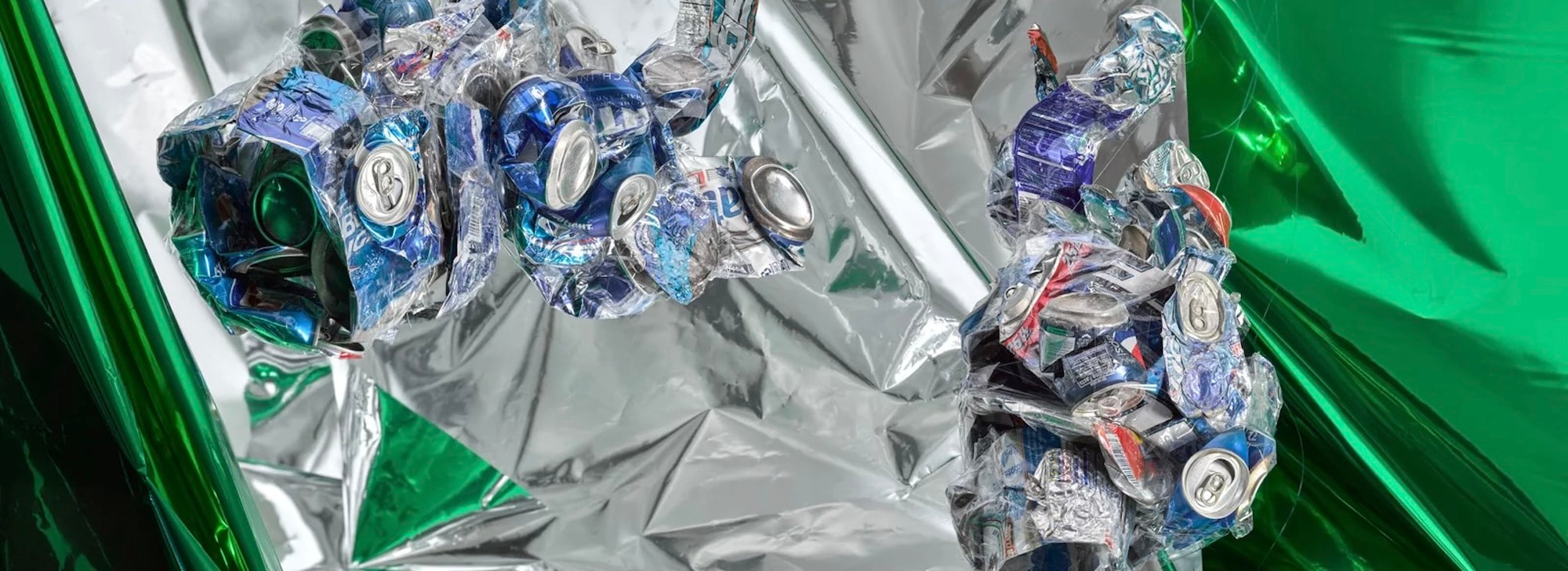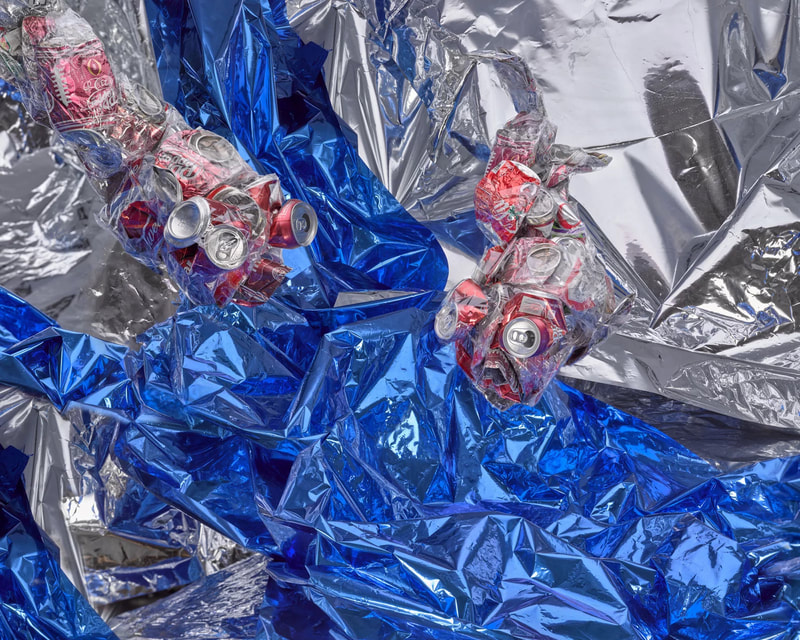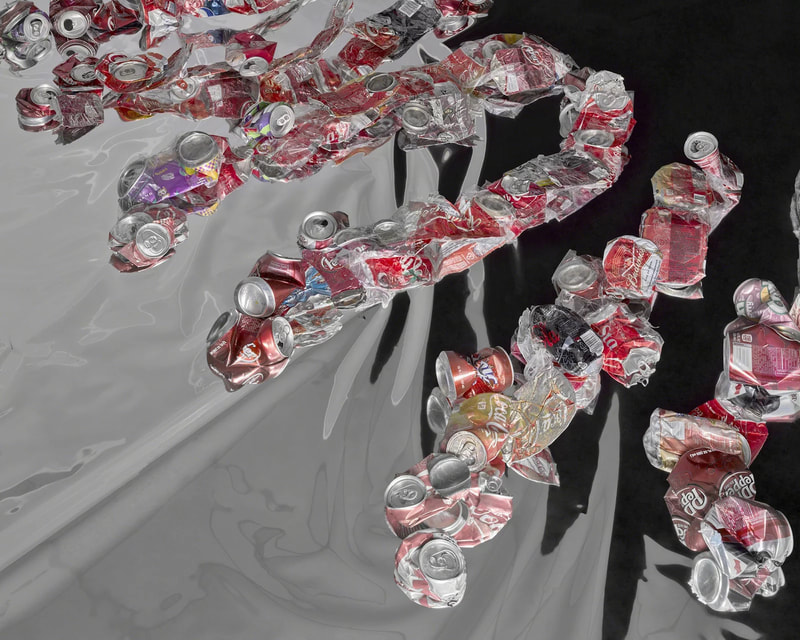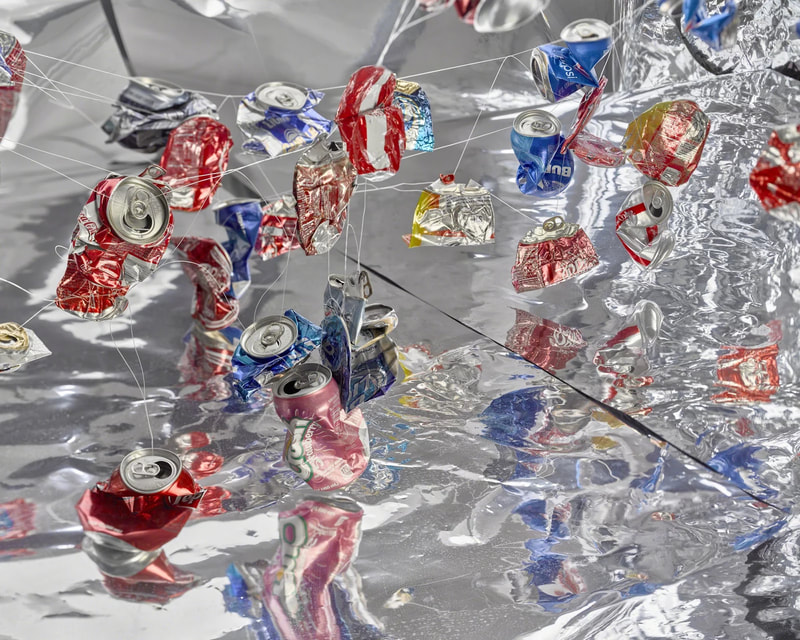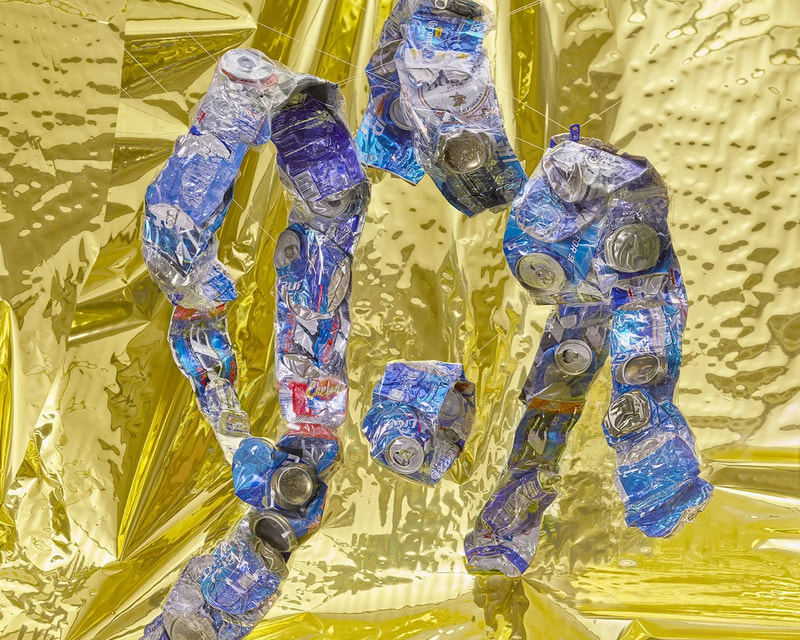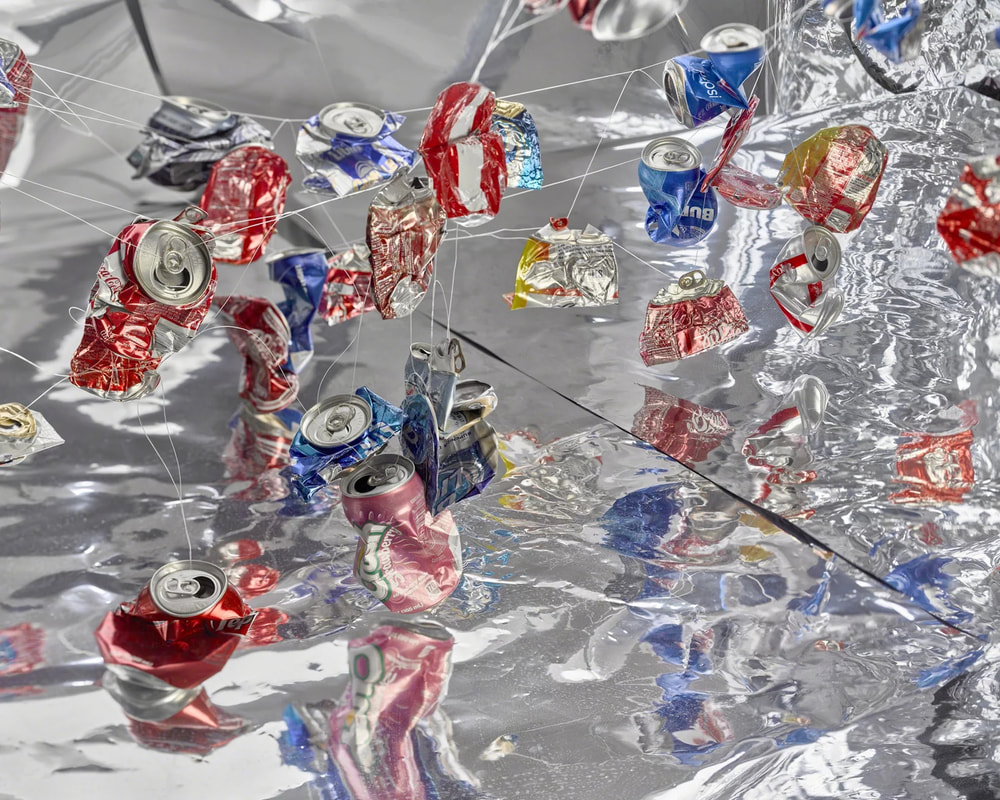Marilyn Waligore
overview works about exhibitions
selected works
view details
About the Artist
|
Marilyn Waligore is Professor of Visual and Performing Arts / Photography at UT-Dallas. She received an Ohio Arts Council Visual Arts Artist Fellowship, Arts Midwest/National Endowment of the Arts Regional Visual Arts Fellowship, and the Moss/Chumley North Texas Artist Award. Her work is included in collections at the Philadelphia Museum of Art, and the Museum of Fine Arts, Houston. She has exhibited in Hong Kong, Spain, Italy, Sweden, Thailand, and at SIGGRAPH, the New York Digital Salon, Center for Photography at Woodstock, and in Texas at Ro2 Gallery, Artspace 111, Women & Their Work, and the Texas Biennial.
|
Artist Statement
|
Through my artwork, I explore the powers of attraction and repulsion as I reflect on questions relating to sustainability. In my photographs, I have constructed these undersea worlds to reference our impact on the environment, using aluminum packaging to describe aquatic creatures. These photographs document objects that are assembled to create sculptural forms. My transformation of aluminum detritus into monstrous and fantastic sea creatures alludes to the contrast between our disregard for the environment and our simultaneous dependence upon it for our survival. Aluminum packaging becomes symbolic of our use of natural resources as the images suggest fanciful options for the recycling of post-consumer waste. I affirm the materiality of objects that we tend to “delete” from our visual field, despite their prevalence in our urban environments. Collected during walks in my neighborhood, this litter can be described as the “trash of trash.” I hope to encourage an embrace of the potential actions of reduce, reuse, recycle, and conserve, while fostering reconsideration of our daily habits, and their eventual global impact.
“The indifference engine that drives litter is the flip side of desire. It’s the waste we could not bring ourselves to care even a little bit about, when we had, just moments before, cared about some part of the thing we’re throwing out very much” (Thrill, 21) The designation of an object as something of value or as waste can swing quickly from one category or the other, forming part of the larger cycle of consumption. This movement from intimate use, by holding the item in one’s hand, to quasi-invisibility, as it lies in a gutter, becomes manifested in the accumulation of litter. As a representation of litter, the discarded aluminum container endures as a visible emblem of the traces of consumer products that mark our environment. Aluminum, as a category of litter, is unusual, due to the potential for recycling and its monetary value as a material. Ultimately, I am drawn to the concept of how we assign value to objects and how that process fluctuates over time. A consumer economy is dependent upon the constant need for the purchase of goods. In order to acquire new products, the used, obsolete, outdated objects must be discarded; we seek to remove them from our everyday lives, our personal space, our visual field. There is a correspondence between the objects that I photograph, designed to prioritize convenient access to beverages, and the fact that they end up often in waterways, which in one form or another remain the source for their contents. I began to refer to the overlooked areas of creeks and lakes that form a bridge between the objects that I collect and the environments where I locate them, in my neighborhood in the North Dallas/Richardson area. I continue to record some of the many local streams, bayous, and waterways, to extend my investigation of our impact on the places we inhabit through the objects that we leave behind. Thill, Brian. Waste. New York: Bloomsbury, 2015. |
solo exhibitions
Marilyn waligore: post-convenienceMay 25 - July 20, 2019
|

